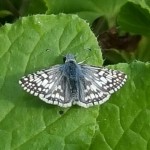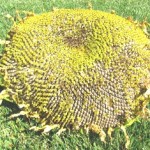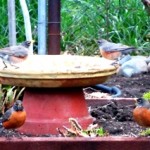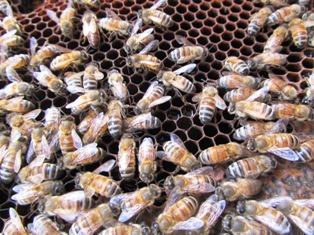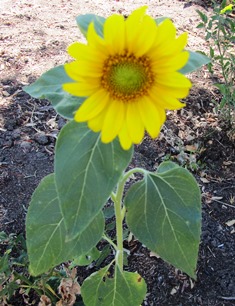Plant for the Pollinators
I seldom need an occasion to put in another bed of flowers, but this is National Pollinator Week. I think a new bed is in order to attract local bees, birds, bats, and butterflies–all considered pollinators. Having these small creatures around benefits landscapes, gardens, and orchards.
The U.S. Fish and Wildlife Service has noted that over 75 percent of our plants are pollinated by birds, animals, and insects. We can help ensure these creatures will be around for a long time if we restore their habitats and ensure they have food and water.
There are many lovely plants you can grow that don’t require a lot of care.
- lavender
- bee balm
- echinacea
- sage
- cilantro
- thyme
- sunflowers
- sweet alyssum
- anemone
- borage
- geraniums
- scented pelargoniums
- mint
A tapestry of colorful herbs and flowers beautifies your landscape and pollinators love the diversity. If you don’t have a lot of space, grow some of these plants in planter boxes, clay pots, or other types of containers.
Put in a water feature, too, such as a table-top or larger fountain that recycles water. Even a pottery saucer filled each day can attract pollinators.
It won’t take long for the bees and hummingbirds to find the water. Their frequent visits are fun to watch, and they’ll likely be sipping throughout the day.
_________________________________________________________________________
If you enjoy reading about farmette topics, check out my Henny Penny Farmette series of cozy mysteries from Kensington Publishing. My newest novel includes delicious recipes, tips on keeping bees and chickens, and much more. Click on this URL for more information, http://tinyurl.com/ya5vhhpm
.
An Heirloom Selection of Old Varieties of Flowers
Mid-March to early April on the farmette brings the celebration of birthdays and the promise of new selections of flowers for our spring gardens. This year, our new plants are old varieties.
A fellow-gardener friend gave me a selection of antique flowers for pollinators that included Bee Balm, Sweet Alyssum, Prickly Poppy, Sunflowers, and Kiss-Me-Over-The-Garden-Gate. These will go in various flower beds around our property.
Pollinators include many species of bees. We want them in our gardens to pollinate our fruits, vegetables, berries, and nut crops. Planting open-pollinated flowers enable pollinators to forage for pollen and nectar (their sources of food). When we provide rich food sources for pollinators, our food crops will benefit.
At a time when bee populations are declining worldwide, gardeners everywhere can help the besieged bees by planting diverse, open-pollinated varieties of pollen- and nectar-rich flowers. The following flower selection are considered old garden mainstays.
Bee Balm–“Bergamo” Monarda hybrida
This perennial likes sun to light shade and soil that is moist, and well-drained. The plant will reach two feet tall and will bloom summer to fall. It attracts both hummingbirds and bees.
Sweet Alyssum–“Benthalmii” Lobularia maritima
Alyssum is an annual that likes full sun but part shade in the hottest areas of hte garden. Soil preferences is rich, moist, and well-drained. It reaches a height of ten inches and small white blooms form summer to fall. It will flower repeatedly if it is clipped back after flowering.
Prickly Poppy–“Busy Bee” Argemone platyceras
A sun lover like all poppies, this one is an annual that loves poor, dry, gravelly soil. It will grow to three feet and bloom throughout the summer into fall. It does have prickly spines, so care must be taken to avoid contact with the spines.
Sunflowers–“Pan,” Helianthus debilis, subspecies: cucumerifolius
Another sun lover, this annual thrives in rich, well-drained soil. Plants will reach three feet in height and bloom summer through the fall. These sunflowers make excellent cut flowers.
Kiss-Me-Over-The-Garden-Gate–” Polylgonum orientale
This annual will go at the back of the garden since it reaches a height of six to seven feet. It likes well-drained, moist, rich soil that is located in full sun. The plants bloom summer throughout the fall and self-sows.
 Facebook
Facebook Goodreads
Goodreads LinkedIn
LinkedIn Meera Lester
Meera Lester Twitter
Twitter




